- Clone
- HIT3a (See other available formats)
- Regulatory Status
- RUO
- Workshop
- V CD03.05
- Other Names
- T3, CD3ε
- Isotype
- Mouse IgG2a, κ
- Barcode Sequence
- CCGAGAACAGACCAA
| Cat # | Size | Price | Quantity Check Availability | ||
|---|---|---|---|---|---|
| 300345 | 10 µg | $369.00 | |||
CD3ε is a 20 kD chain of the CD3/T-cell receptor (TCR) complex which is composed of two CD3ε, one CD3γ, one CD3δ, one CD3ζ (CD247), and a T-cell receptor (α/β or γ/δ) heterodimer. It is found on all mature T lymphocytes, NK-T cells, and some thymocytes. CD3, also known as T3, is a member of the immunoglobulin superfamily that plays a role in antigen recognition, signal transduction, and T cell activation.
Product Details
- Verified Reactivity
- Human
- Antibody Type
- Monoclonal
- Host Species
- Mouse
- Formulation
- Phosphate-buffered solution, pH 7.2, containing 0.09% sodium azide and EDTA
- Preparation
- The antibody was purified by chromatography and conjugated with TotalSeq™-B oligomer under optimal conditions.
- Concentration
- 0.5 mg/mL
- Storage & Handling
- The antibody solution should be stored undiluted between 2°C and 8°C. Do not freeze.
- Application
-
PG - Quality tested
- Recommended Usage
-
Each lot of this antibody is quality control tested by immunofluorescent staining with flow cytometric analysis and the oligomer sequence is confirmed by sequencing. TotalSeq™-B antibodies are compatible with 10x Genomics Single Cell Gene Expression Solutions.
To maximize performance, it is strongly recommended that the reagent be titrated for each application, and that you centrifuge the antibody dilution before adding to the cells at 14,000xg at 2 - 8°C for 10 minutes. Carefully pipette out the liquid avoiding the bottom of the tube and add to the cell suspension. For Proteogenomics analysis, the suggested starting amount of this reagent for titration is ≤ 1.0 µg per million cells in 100 µL volume. Refer to the corresponding TotalSeq™ protocol for specific staining instructions.
Buyer is solely responsible for determining whether Buyer has all intellectual property rights that are necessary for Buyer's intended uses of the BioLegend TotalSeq™ products. For example, for any technology platform Buyer uses with TotalSeq™, it is Buyer's sole responsibility to determine whether it has all necessary third party intellectual property rights to use that platform and TotalSeq™ with that platform. - Application Notes
-
Additional reported (for the relevant formats) applications include: immunohistochemical staining of acetone-fixed frozen sections, immunoprecipitation, and activation of T lymphocytes4-7. The HIT3a antibody is able to stimulate T cell activation. The LEAF™ purified antibody (Endotoxin <0.1 EU/µg, Azide-Free, 0.2 µm filtered) is recommended for functional assays (Cat. No. 300314). For highly sensitive assays, we recommend Ultra-LEAF™ purified antibody (Cat. No. 300332) with a lower endotoxin limit than standard LEAF™ purified antibodies (Endotoxin <0.01 EU/µg).
- Additional Product Notes
-
TotalSeq™ reagents are designed to profile protein levels at a single cell level following an optimized protocol similar to the CITE-seq workflow. A compatible single cell device (e.g. 10x Genomics Chromium System and Reagents) and sequencer (e.g. Illumina analyzers) are required. Please contact technical support for more information, or visit biolegend.com/totalseq.
The barcode flanking sequences are GTGACTGGAGTTCAGACGTGTGCTCTTCCGATCTNNNNNNNNNN (PCR handle), and NNNNNNNNNGCTTTAAGGCCGGTCCTAGC*A*A (capture sequence). N represents either randomly selected A, C, G, or T, and * indicates a phosphorothioated bond, to prevent nuclease degradation.
View more applications data for this product in our Scientific Poster Library. -
Application References
(PubMed link indicates BioLegend citation) -
- Schlossman S, et al. Eds. 1995. Leucocyte Typing V. Oxford University Press. New York.
- Knapp W. 1989. Leucocyte Typing IV. Oxford University Press New York.
- Barclay N, et al. 1997. The Leucocyte Antigen Facts Book. Academic Press Inc. San Diego.
- Sedelies KA, et al. 2004. J. Biol. Chem. 279:26581. (Activ)
- Rivollier A, et al. 2004. Blood 104:4029. (Activ)
- Scharschmidt E, et al. 2004. Mol. Cell Biol. 24:3860. (Activ)
- Smeltz RB. 2007. J. Immunol. 178:4786. (Activ)
- RRID
-
AB_3083167 (BioLegend Cat. No. 300345)
Antigen Details
- Structure
- Ig superfamily, with the subunits of CD3γ, CD3δ, CD3ζ (CD247) and TCR (α/β or γ/δ) forms CD3/TCR complex, 20 kD
- Distribution
-
Mature T and NK-T cells, thymocyte differentiation
- Function
- Antigen recognition, signal transduction, T cell activation
- Ligand/Receptor
- Peptide antigen bound to MHC
- Cell Type
- NKT cells, T cells, Thymocytes, Tregs
- Biology Area
- Immunology
- Molecular Family
- CD Molecules, TCRs
- Antigen References
-
1. Barclay N, et al. 1993. The Leucocyte FactsBook. Academic Press. San Diego.
2. Beverly P, et al. 1981. Eur. J. Immunol. 11:329.
3. Lanier L, et al. 1986. J. Immunol. 137:2501-2507. - Gene ID
- 916 View all products for this Gene ID
- UniProt
- View information about CD3 on UniProt.org
Other Formats
View All CD3 Reagents Request Custom Conjugation| Description | Clone | Applications |
|---|---|---|
| APC anti-human CD3 | HIT3a | FC |
| Biotin anti-human CD3 | HIT3a | FC |
| FITC anti-human CD3 | HIT3a | FC |
| PE anti-human CD3 | HIT3a | FC |
| PE/Cyanine5 anti-human CD3 | HIT3a | FC |
| Purified anti-human CD3 | HIT3a | FC,IP,IHC-F,Activ |
| APC/Cyanine7 anti-human CD3 | HIT3a | FC |
| PE/Cyanine7 anti-human CD3 | HIT3a | FC |
| Alexa Fluor® 488 anti-human CD3 | HIT3a | FC |
| Alexa Fluor® 647 anti-human CD3 | HIT3a | FC |
| Alexa Fluor® 700 anti-human CD3 | HIT3a | FC |
| PerCP anti-human CD3 | HIT3a | FC |
| PerCP/Cyanine5.5 anti-human CD3 | HIT3a | FC |
| Pacific Blue™ anti-human CD3 | HIT3a | FC |
| Ultra-LEAF™ Purified anti-human CD3 | HIT3a | FC |
| PE/Dazzle™ 594 anti-human CD3 | HIT3a | FC |
| Spark UV™ 387 anti-human CD3 | HIT3a | FC |
| Spark Red™ 718 anti-human CD3 | HIT3a | FC |
| TotalSeq™-C1290 anti-human CD3 | HIT3a | PG |
| Brilliant Violet 605™ anti-human CD3 | HIT3a | FC |
| TotalSeq™-B1290 anti-human CD3 | HIT3a | PG |
| Brilliant Violet 510™ anti-human CD3 | HIT3a | FC |
Compare Data Across All Formats
This data display is provided for general comparisons between formats.
Your actual data may vary due to variations in samples, target cells, instruments and their settings, staining conditions, and other factors.
If you need assistance with selecting the best format contact our expert technical support team.
-
APC anti-human CD3
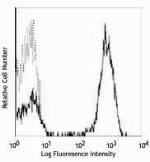
Human peripheral blood lymphocytes stained with HIT3a APC -
Biotin anti-human CD3
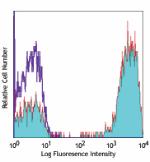
Human peripheral blood lymphocytes stained with biotinylated... -
FITC anti-human CD3
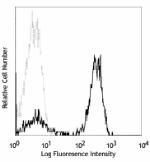
Human peripheral blood lymphocytes stained with HIT3a FITC -
PE anti-human CD3
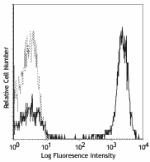
Human peripheral blood lymphocytes stained with HIT3a PE -
PE/Cyanine5 anti-human CD3
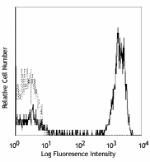
Human peripheral blood lymphocytes stained with HIT3a PE/Cya... -
Purified anti-human CD3
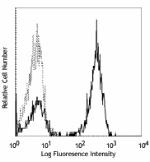
Human peripheral blood lymphocytes stained with purified HIT... -
APC/Cyanine7 anti-human CD3
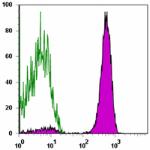
Human peripheral blood lymphocytes stained with HIT3a APC/Cy... -
PE/Cyanine7 anti-human CD3

Human peripheral blood lymphocytes stained with HIT3a PE/Cya... -
Alexa Fluor® 488 anti-human CD3
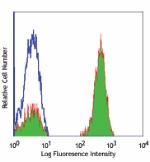
Human peripheral blood lymphocytes stained with HIT3a Alexa ... -
Alexa Fluor® 647 anti-human CD3
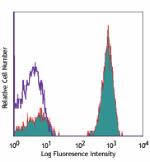
Human peripheral blood lymphocytes stained with HIT3a Alexa ... -
Alexa Fluor® 700 anti-human CD3
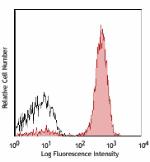
Human peripheral blood lymphocytes stained with HIT3a Alexa ... -
PerCP anti-human CD3
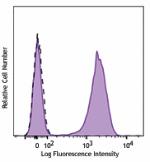
Human, lysed whole blood was stained with CD3 (clone HIT3a) ... -
PerCP/Cyanine5.5 anti-human CD3

Human peripheral blood lymphocytes were surface stained with... -
Pacific Blue™ anti-human CD3

Human peripheral blood lymphocytes stained with HIT3a Pacifi... -
Ultra-LEAF™ Purified anti-human CD3
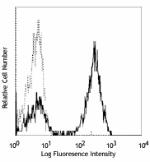
Human peripheral blood lymphocytes stained with LEAF™ purifi... -
PE/Dazzle™ 594 anti-human CD3
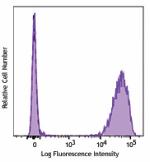
Human peripheral blood lymphocytes were stained with CD3 (cl... -
Spark UV™ 387 anti-human CD3

Human peripheral blood lymphocytes were stained with anti-hu... -
Spark Red™ 718 anti-human CD3

Human peripheral blood lymphocytes were surface stained with... -
TotalSeq™-C1290 anti-human CD3
-
Brilliant Violet 605™ anti-human CD3

Human peripheral blood lymphocytes were surface stained with... -
TotalSeq™-B1290 anti-human CD3
-
Brilliant Violet 510™ anti-human CD3

Human peripheral blood lymphocytes were stained with anti-hu...
